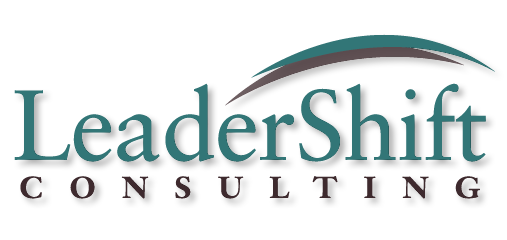Workplace Diversity: Vitamin or Pathogen?
Ever since I’ve been in the workplace, which is a long time now, diversity has been touted as a business and moral imperative. Most organizations hold diversity as a core value. Yet 50 years into this push for diversity, and with a workforce growing more diverse by the day, why do we still need to talk about this? Why are women and people of color still so scarce in top leadership roles? Why do so many organizational cultures still reflect the complexion and preferences of their founders, rather than the kaleidoscope of the current workforce? The reasons are many and complex, but I want to explore one in particular: our default mindset toward diversity.
I believe there are two fundamental mindsets that operate at both an individual and collective level: diversity as vitamin, and diversity as pathogen.
The ‘vitamin’ mindset holds that:
- diversity (the many forms of variety that humans bring) is a necessary element to the health of the enterprise;
- a deficiency in diversity weakens the system, and the remedy is more diversity; therefore…
- the organization embraces and metabolizes diversity as medicine – even when it might be hard to digest.
The ‘pathogen’ mindset holds that:
- what is different from the so-called norm is considered alien, foreign or other;
- foreign objects stress the system and threaten its health and stasis; therefore…
- the organization must use its informal ‘immune system’ to neutralize what is different. This includes behaviors such as silencing, ignoring, isolating, attacking or discouraging people who are different from the norm.
Like most people, you and I would say that we ascribe to the “vitamin” theory. And at the conscious level, we probably do. But researchers at Harvard University’s Project Implicit have shown conclusively that most people have both an explicit, conscious view of diversity, as well as an implicit, unconscious one.
Our conscious mind tends to embrace difference (vitamin view), while our subconscious mind tends to house our more negative perceptions (pathogen view). Research shows that these dual mindsets co-exist within almost all of us. Because both levels of belief are operating simultaneously, we behave inconsistently. We say we value diversity (which we do), but our behavior will reveal any of our ambivalence or fear toward it. Because we don’t tend to own or acknowledge our implicit biases, those tend to disproportionally drive our behavior. Hence, 50+ years in, we’re still struggling to embody our diversity ideals because we are conflicted.
In their excellent book, “Blindspot,” the Project Implicit researchers emphasize that these dual mindsets are not cause for shame or blame. They are part of the human package. But the beliefs we don’t own or examine can drive some very counterproductive behavior that can only be righted through self-awareness and conscious effort.
These dueling mindsets don’t just happen at the individual level; they occur organizationally, driving the behavior of an entire system.
Like most individuals, most organizations hold a consciously positive mindset toward diversity, and we can see that play out concretely. Many companies hail diversity’s rich virtues. They aggressively recruit for it. They set up diversity and inclusion programs, and sponsor affinity groups around race, gender and sexual orientation. None of this would be happening unless organizations believed, at some level, that difference is a strengthener, worthy of aspiration and investment. Diversity as vitamin.
And yet… If organizations were operating solely from the ‘vitamin’ mindset, workplace life would be very different. Employees of all kinds would feel a more consistent sense of ease and belonging at work. Variety, both in demographics and perspectives, would be reflected and embraced at all levels. Employee retention, satisfaction and turnover rates would be consistent across groups. If our sole belief were that diversity was a nutritional necessity for organizational health, we’d take our vitamins – happily and often.
Our lived experience reveals the diversity-as-pathogen mindset is also strongly at work. Often without intent, organizations will treat a person who seems “different” the same way a body would treat a foreign object: as a threat. Like the body, organizations will deploy an autonomic cultural immune system to isolate or neutralize that disruption to the norm.
Here are some of the indicators of the diversity immune system at work at the interpersonal or group level:
- The minority person or point of view is repeatedly excluded, ignored or negated.
- People are spending significant energy tending the wounds of conduct that, intended or not, diminishes them.
- Some groups of people chronically struggle to be heard or included.
- Those who raise questions about inequity are told that they’re seeing the situation incorrectly. They’re often accused of being “sensitive,” “angry” or “difficult.”
Here are some indicators of the ‘diversity as pathogen’ mindset working at the systemic level:
- Pay gaps might exist between different demographic groups doing the same work.
- An organization’s retention rates may be inconsistent across demographic groups.
- The ranks of senior leadership may not reflect a variety of backgrounds and points of view.
- New employees who are not white, male and heterosexual may still be referred to as “diversity hires:” as if white/male/hetero is the standard of sameness and all others are, well, “other.”
- An organization may have succeeded at hiring a diverse workforce, but finds that a disproportionate percentage of non- white/male/hetero employees feel undervalued, underutilized, over-securitized or excluded.
If your organization is experiencing any of these dynamics, it’s facing an opportunity you may not have considered. Rather than building new policies, procedures or programs, consider first examining the organization’s underlying mindset(s), and identify how those are expressed through behavior, culture, systems and outcomes. Awareness isn’t everything, but it’s the necessary starting place.
Not everything that is faced can be changed, but nothing can be changed until it is faced.
~ James Baldwin
